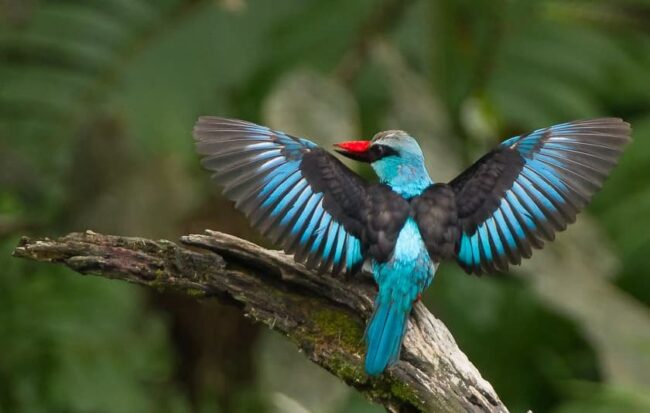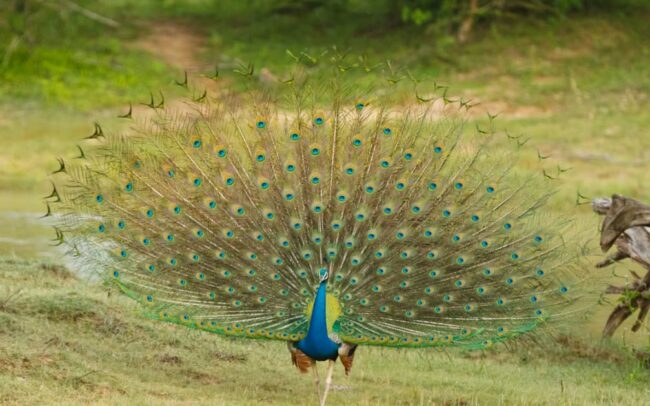Peacocks are renowned for their extraordinary beauty and captivating displays. With their resplendent plumage and graceful demeanor, they have captivated humans for centuries. In this article, we will explore the world of peacocks, their stunning physical characteristics, the enchanting display of their feathers, the different peacock species found worldwide, and the cultural significance attached to these magnificent birds.
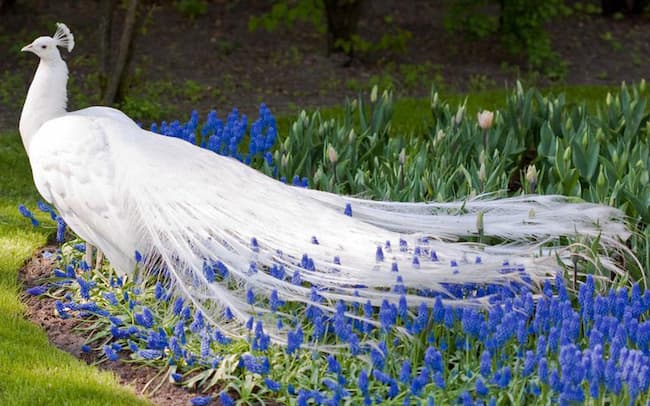
The Majestic Peacock
2.1 Physical Appearance
Peacocks are known for their stunning physical features, with males, known as peacocks, being particularly impressive. They possess long, iridescent tail feathers, which are known as a train, that can extend up to five feet in length. The train is adorned with vibrant, eye-like patterns and brilliant hues of blues, greens, and golds. Females, called peahens, exhibit more subdued colors with a mix of browns and greys, allowing them to blend into their surroundings for protection.
2.2 Species and Varieties
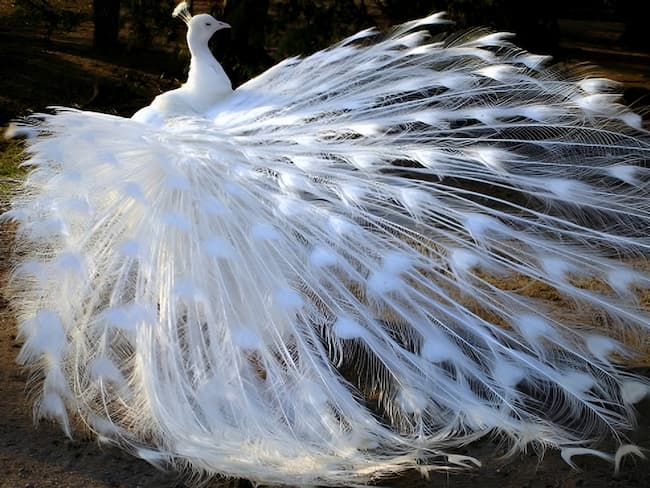
There are several peafowl species, each displaying unique attributes and colors. The most common species is the Indian Peafowl (Pavo cristatus), known for its striking blue and green plumage. The Green Peafowl (Pavo muticus) features a distinctive metallic green coloration and elongated feathers. The Congo Peafowl (Afropavo congensis) stands out with its deep blue plumage and vibrant facial patches. Additionally, there are various peafowl varieties and hybrids that exhibit a combination of traits from different species.
The Splendor of Peacock Feathers
3.1 Anatomy of Feathers
Peacock feathers are a marvel of nature. Each feather consists of a central shaft with numerous branches called barbs. These barbs, in turn, have smaller branches called barbules that interlock, creating a flat and intricate structure. It is the microscopic nanostructures on the barbules that give peacock feathers their iridescent and shimmering appearance.
3.2 Display and Courtship
During courtship, male peacocks fan out their magnificent trains into a stunning display. They rhythmically vibrate their feathers, creating a rustling sound and showcasing the intricate patterns. The vibrant colors and the rhythmic movement are intended to attract the attention of females and establish dominance among other males. This display is a mesmerizing sight and a testament to the peacock’s grandeur.
Peacocks Around the World
4.1 Indian Peafowl (Pavo cristatus)
The Indian Peafowl is the most well-known and widespread species of peafowl. Native to the Indian subcontinent, it is often associated with beauty, grace, and spirituality. Its striking blue and green plumage, coupled with its majestic train, have made it an iconic symbol in many cultures.
4.2 Green Peafowl (Pavo muticus)
The Green Peafowl is native to Southeast Asia and is distinguished by its vibrant green plumage and long tail feathers. It is considered a critically endangered species due to habitat loss and poaching, making sightings of these magnificent birds increasingly rare.
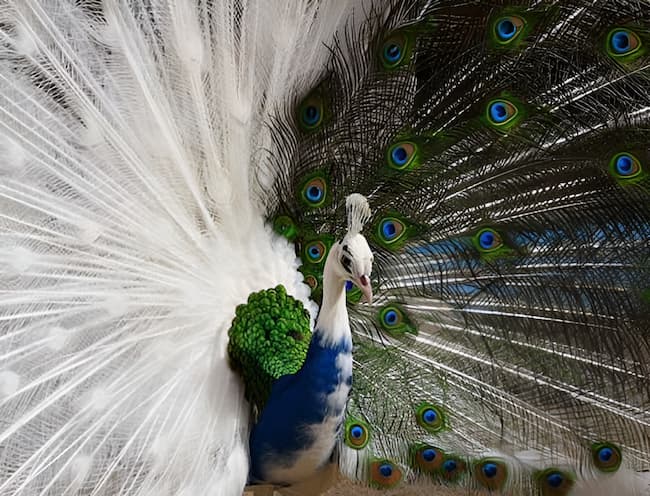
4.3 Congo Peafowl (Afropavo congensis)
The Congo Peafowl, endemic to the rainforests of Central Africa, is characterized by its deep blue plumage and striking facial patterns. It is a lesser-known species compared to its Indian and Green counterparts but equally captivating in its beauty.
4.4 Peafowl Varieties and Hybrids
Apart from the species, there are also various peafowl varieties and hybrids selectively bred for their unique colors and characteristics. These variations add to the diversity and allure of the peafowl world, with hybrid peafowl exhibiting combinations of colors from different species.
Symbolism and Cultural Significance
Peacocks have long been associated with symbolism and cultural significance. In many cultures, they represent beauty, immortality, and renewal. They have adorned artwork, textiles, and architecture, and their feathers have been used as decorative elements. Peacocks are also revered in some religious and spiritual traditions, symbolizing wisdom, protection, and enlightenment.
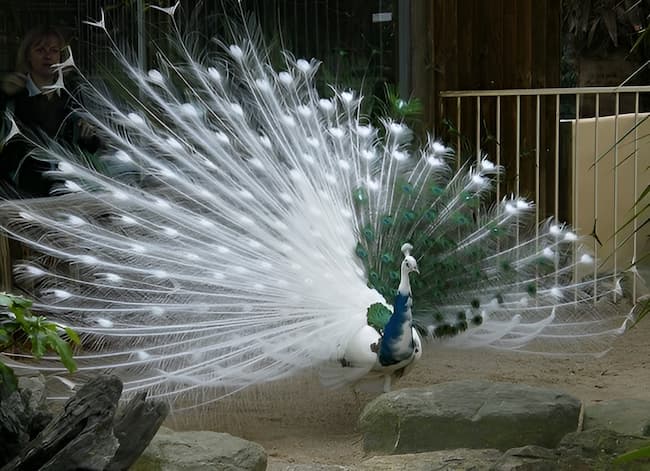
Conservation Efforts
Conservation efforts play a crucial role in protecting peafowl populations and their habitats. These include preserving and restoring natural habitats, implementing sustainable land management practices, and raising awareness about the importance of biodiversity conservation. Supporting organizations that focus on avian conservation can contribute to safeguarding these majestic birds for future generations.
Conclusion
Peacocks, with their resplendent plumage and majestic displays, are undoubtedly some of the most beautiful creatures in the world. Their physical allure, enchanting feather patterns, and cultural significance have captured the imagination of people throughout history. By appreciating their beauty, understanding their ecological importance, and actively participating in conservation efforts, we can ensure the preservation of these magnificent birds and continue to marvel at their splendor for years to come.
FAQs
FAQ 1: Do peacocks fly?
Yes, peacocks are capable of flying. However, they generally prefer to remain on the ground and use their wings for display purposes and short flights to escape predators.
FAQ 2: How long do peacocks live?
Peacocks have an average lifespan of 15 to 20 years in the wild, although some individuals have been known to live longer, reaching up to 25 years.
FAQ 3: Are peacocks found in the wild in the United States?
While peafowl are not native to the United States, they are often found in captivity on private properties, farms, and zoos. In some regions, feral populations have established themselves.
FAQ 4: Can peacocks be kept as pets?
Peacocks can be kept as pets by individuals with sufficient space and resources to accommodate their needs. They require proper care, including adequate housing, feeding, and protection from predators.
FAQ 5: Are peacocks aggressive?
Male peacocks, especially during the breeding season, can exhibit territorial behavior and become aggressive towards other males. However, with proper care and handling, peacocks can be calm and docile animals.
